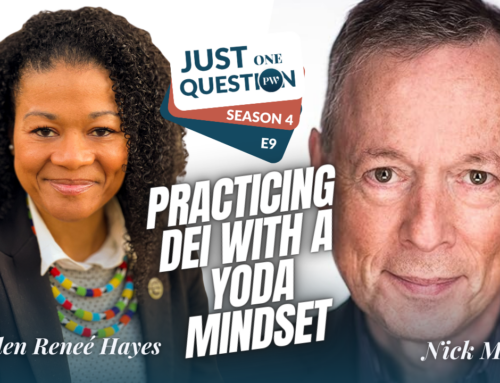Attention spans are shrinking. ADD and ADHD is on the rise – they say. People are overloaded with information. Keynote speeches are getting shorter – TED-talk formats are becoming increasingly common.
Conclusion? You’d better be brief.
But how? As Churchill reportedly said, “If you need me to speak for three hours, I can be ready in ten minutes. If you need me to speak for ten minutes, I need three days” to prepare. I’ve heard that quote attributed to other people too, but I won’t list them, because why go long?
Into this difficult terrain fearlessly leaps Joseph McCormack, with a new book on how to keep it short: Brief: Make a Bigger Impact by Saying Less.
I’m all for it. I don’t have time to keep up with all the reading I have to do for work – the books, the magazines, the speeches – and still have an hour in the day left for those Breaking Bad re-runs.
So let’s get right to it. How do you be brief, a la McCormick?
First of all, you prepare by outlining. What he calls a BRIEF box on your mental mapping of the task – the meeting, the speech, the whatever – at hand. What goes into the BRIEF box? A headline, some background, a reason, key information, an ending, and potential follow up. That’s B for background, R for reason, I for information, E for ending, and F for follow up.
I like it, except for the acronym, provided it all doesn’t go too long. You still have to be brief within those categories. Gimmicky, but basically sound.
Once you’re prepared, then what? McCormick is a fan of stories – and I wholeheartedly concur. He provides a narrative map, which includes a focal point, setup, opportunity, approach, and payoff. That seems straightforward enough. It’s not the way I would do it, but it will work. There’s a little more detail to the method, but that’s basically it.
Then, to help keep other people brief, McCormack advocates active listening – helping people structure what they’re saying with leading questions that keep them on track. To do that, you actually have to listen to other people rather than check your iPhone, but the idea is that you’ll save time in the long run if you do it right, because other people won’t go on so long.
So how does McCormack fill up a 230-page book once these three ideas are out of the way? There’s another, brief piece on being visual, because, well, a picture is worth a thousand words or something. Then there are lots of examples, stories, and sub-bullets. But overall, McCormick’s approach is sound, and his three main points incontrovertible. Let’s all learn to be brief – starting now.
Oh. One more thing. My experience is that the time always seems longer when someone else is talking rather than you. I’ve found further that when I listen patiently to other people they always seem to have enough time, but that their time runs short when it’s me that’s talking and they have to listen. So the advice I’d add to McCormack’s is in fundamental agreement with his: make your own points as briefly as possible, and be prepared to offer other people the courtesy of hearing them out.
Then – and here’s the one idea that seems to be missing from McCormack’s otherwise worthy text – make room for passion. Passion is contagious, and real passion is wonderful – and in wonderfully short supply. So when you run across it, make room for it, and give it all the time in the world. Passion is what changes the world – and when it shows up, time stands still for it.
McCormick is suspicious of passion because it makes people prolix. Too bad, I say. The real reason everyone wants everyone else to be brief is that most of what people talk about isn’t something they’re passionate about. It’s just stuff.
If we all stuck to what we’re passionate about, and that passion gave our eloquence wings to soar with, we’d have plenty of time and so would everyone else.








Nick, I am not sure I want to plow through 230 pages of McCormick’s book after reading your last sentence, “If we all stuck to what we’re passionate about, and that passion gave our eloquence wings to soar with, we’d have plenty of time and so would everyone else.”
Even though McCormick’s approach is sound, I’m a little leary of some one who’s subject is on How To Be Brief and it takes him 230 pages to write on the subject.
I think the simple approach of preparing a gripping Introduction, three helpful and exciting points in the Body of the speech and a challenging Conclusion that calls to action can’t be beat if it is done with PASSION.
Thanks for the article.
Thanks, Dennis — it is the paradox of the book-writing author on brevity: do we really need a book? Another book? Hmmmmm. To be fair to McCormick, he does address the point in the beginning of his intro as a joke his family made. He goes on to argue that we need to learn to be brief, etc., hence the book. So there you are. I think he might have gone with 180 pages, or even less.
Hmmmmm…. 230 pages to tell me to be brief… what’s up with that? I’m reminded of “I would have written a shorter letter, but I did not have the time.” ( Blaise Pascal, Provincial Letters: Letter XVI, 4 December, 1656 http://en.wikiquote.org/wiki/Blaise_Pascal )
Indeed!
Nick,
Passion may not trump brevity but it seems to be the currency that buys us a little more time with our audience. I think making room for passion could be the subject of another great post from you – for consideration.